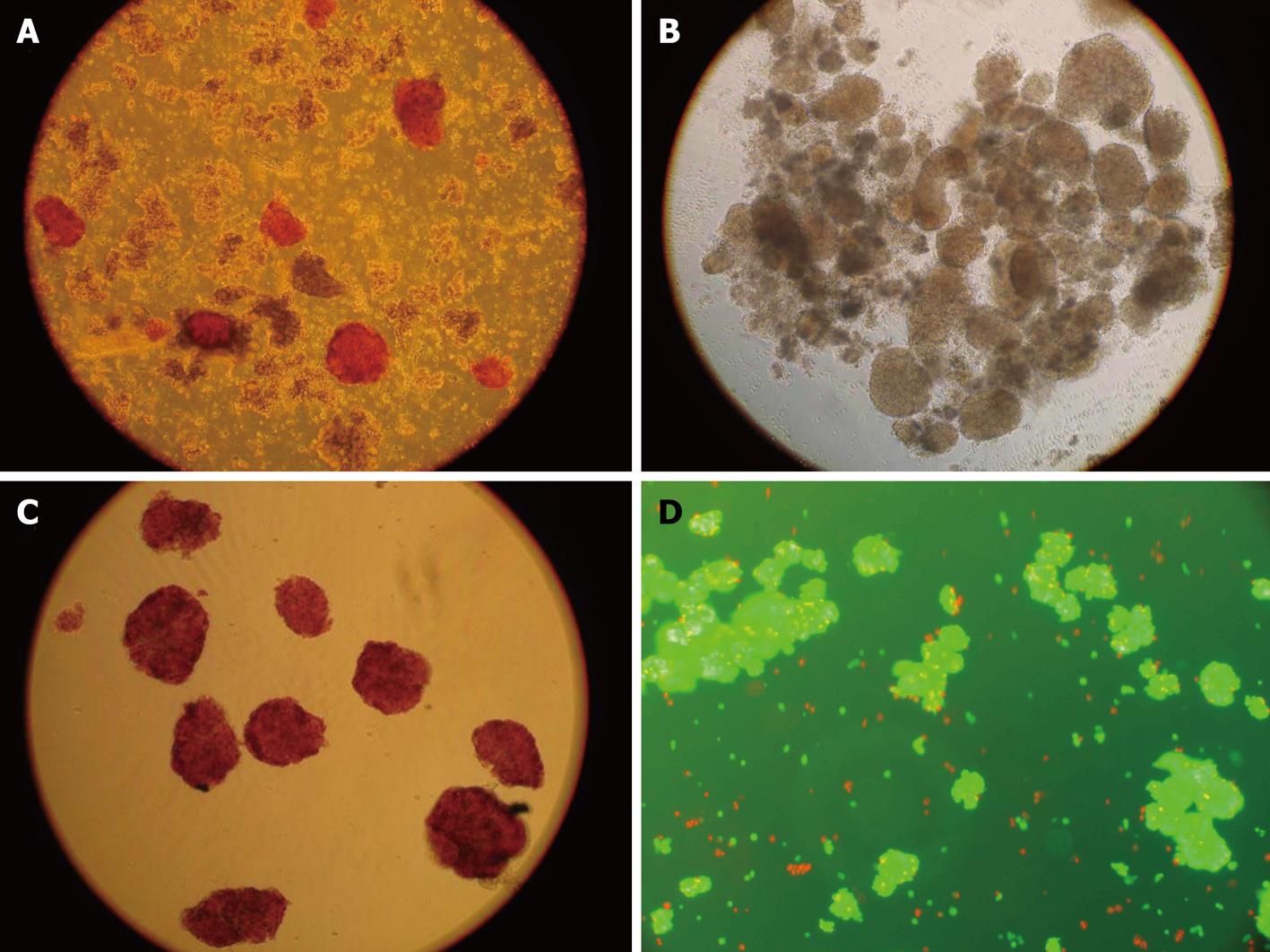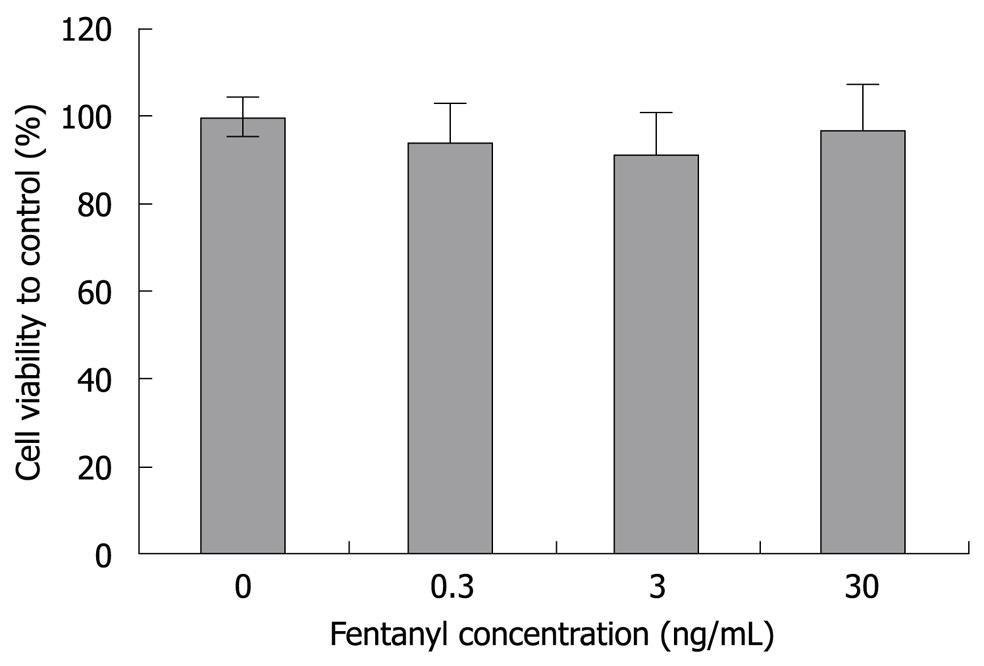Copyright
©2009 The WJG Press and Baishideng.
World J Gastroenterol. Sep 7, 2009; 15(33): 4163-4169
Published online Sep 7, 2009. doi: 10.3748/wjg.15.4163
Published online Sep 7, 2009. doi: 10.3748/wjg.15.4163
Figure 1 The procedure of islets preparation.
A: The islets were stained red by DTZ in digested pancreatic tissue; B: Pure islets isolated from digested pancreatic tissue; C: Pure islets stained by DTZ; D: The dye AO-PI stained living cells green and dead cells red in minimal background fluorescence (× 100).
Figure 2 The cell viability after co-culture with fentanyl.
The viability measured by MTT was 100% in the control group. The viability of islets exposed to 0.3, 3 and 30 ng/mL fentanyl was 94.3%, 91.3% and 96.9%, respectively. There was no difference between groups. The data represent means ± SE.
Figure 3 Electron micrographs of β-cells in rat pancreatic islets of control group.
N: Nucleus; SG: Secretory granule; V: Vesicle; E: Endoplasmic reticulum. The typical β-cells had an abundance of cytoplasmic granules and endoplasmic reticulum. The electron density of the granules increased when the granules were maturating in the vesicles. The mature secretory granules displayed a highly electron-dense core surrounded by a wide electron-lucent halo. The granules had a space between the core and the membrane. The vesicles showed a normal round outline (A, × 6000). There were many nascent granules in the β-cells; subsequent maturation involved further condensation of the matrix constituents and a reduction in granule diameter (B, × 8000).
Figure 4 Electron micrographs of rat pancreatic islet β-cells after exposure to 30 ng/mL fentanyl for 48 h.
N: Nucleus; SG: Secretory granules; V: Vesicle; E: Endoplasmic reticulum. Chromatin margination and severe cytoplasmic vacuolization and degeneration were observed in the islets. Large and small vacuoles are present in the cytoplasm. The secretory granules and endoplasmic reticulum were much smaller than in the control group (A, × 10 000). In addition, endoplasmic reticulum and normal vesicles were almost never observed (B, × 12 000).
- Citation: Qian TL, Wang XH, Liu S, Ma L, Lu Y. Fentanyl inhibits glucose-stimulated insulin release from β-cells in rat pancreatic islets. World J Gastroenterol 2009; 15(33): 4163-4169
- URL: https://www.wjgnet.com/1007-9327/full/v15/i33/4163.htm
- DOI: https://dx.doi.org/10.3748/wjg.15.4163












